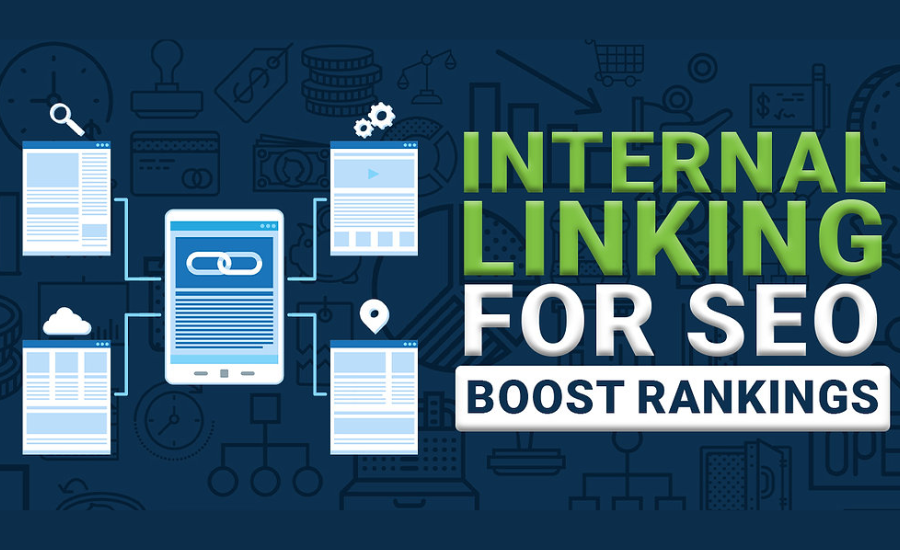When it comes to Search Engine Optimization (SEO), the importance of internal linking cannot be overstated. Internal links are crucial for improving your website’s crawlability, distributing page authority, and enhancing the user experience. For content creators, digital marketers, and SEO specialists, mastering the art of internal linking can be a game-changer in achieving those coveted higher rankings.
In this blog post, we’ll guide you through the essentials of internal linking, from its basic principles to advanced strategies. You’ll learn why internal links matter, how to implement them effectively, and which tools can help you optimize your internal linking structure. By the end of this post, you’ll be equipped with actionable insights to boost your site’s SEO through strategic internal linking.
What are Internal Links?
Internal links are hyperlinks that point to another page on the same website. Unlike external links, which direct users to different domains, internal links keep visitors on your site. They help search engines understand the structure of your site and discover new content.
How Do Internal Links Work?
Internal links work by connecting related content within your website, making it easier for search engines to crawl and index your pages. When Googlebot or any other search engine bot visits your site, it follows these links to gather information about your content and its relevance.
Importance of Internal Links
Internal links not only help search engines but also improve user experience. By guiding visitors to related articles, product pages, or resources, you keep them engaged and reduce bounce rates. This can lead to higher conversion rates and increased dwell time, both of which are positive signals for SEO.
Different Types of Internal Links
Internal links can be categorized into several types, each serving distinct purposes in optimizing your website’s SEO and improving user navigation. The primary types include:
- Contextual Links: These are embedded within the body content of your pages and direct users to related articles or relevant resources. They are often distinguished by anchor text, which describes the linked content, thus providing both context for users and relevance for search engines.
- Navigational Links: Found in menus, footers, and sidebars, navigational links guide users through your site’s structure. These links help establish a clear hierarchy, allowing both users and search engines to easily access important sections of your website.
- Footer Links: These links are placed in the footer section of your website and often direct users to essential pages such as Privacy Policy, Terms of Service, or “About Us.” While they may not contribute as significantly to SEO as contextual links, they still provide value in terms of site navigation.
- Image Links: By linking images to relevant pages, you can improve user engagement and allow users to explore further content. Ensure that the alt text for these images is descriptive to aid search engines in understanding the context.
By understanding these different types of internal links, you can strategically enhance both user experience and the overall effectiveness of your SEO efforts.
Best Practices for Internal Linking
Here are some of the best practices for internal linking.
Strategically Implement Internal Links
When implementing internal links, consider the following strategies to maximize their effectiveness. First, ensure that the anchor text used for your links is descriptive and relevant to the content being linked. This not only aids users in understanding what they can expect but also helps search engines to better index your pages.
Second, maintain a balance in the number of links per page; too many links can overwhelm users and dilute the value of each link. Aim for a natural flow within your content where links can enhance the reader’s experience without appearing forced.
Additionally, regularly review and update your internal links to ensure they remain relevant, especially as you add new content to your site. This practice will keep your site’s structure solid and user-friendly, promoting longer engagement and potentially boosting SEO rankings.
Use Descriptive Anchor Text
Using descriptive anchor text is crucial for both user understanding and SEO effectiveness. Instead of using vague phrases like “click here,” opt for keywords or phrases that succinctly describe the linked content. For instance, if you are linking to an article about optimizing images for the web, you could use anchor text like “learn how to optimize images.” This practice not only helps users understand what to expect when they click the link but also provides search engines with important context, improving your site’s overall relevance.
Remember, including keywords in your anchor text can also enhance the linked page’s chances of ranking higher in search engine results.
Maintain a Natural Flow
To maintain a natural flow in your internal linking strategy, it’s essential to ensure that each link enhances the reader’s understanding and navigation of the topic at hand. Links should be integrated seamlessly into the text, serving as helpful transitions rather than disruptive interruptions. This approach not only fosters a better reading experience but also guides users through a logical progression of information.
Furthermore, regularly reviewing and updating your internal links can help sustain relevance and eliminate any dead ends, ultimately keeping your content fresh and engaging for your audience.
Create a Logical Hierarchy
Establishing a logical hierarchy in your internal linking structure is crucial for both user experience and SEO. Start by categorizing your content into main topics, or pillars, that represent key areas of your website. From these pillars, identify subtopics or related articles that can serve as supporting content.
Use a clear and consistent approach to link from the more general pillar pages to the specific subtopic pages, ensuring that users can easily navigate from broad concepts to detailed information. This hierarchical structure not only aids search engines in understanding the relationship between content pieces but also enhances the user journey by guiding visitors through your site in a logical manner.
Common Mistakes to Avoid
While internal linking can greatly benefit your website’s SEO and user experience, there are some common mistakes to avoid when implementing this strategy.
Overloading with Links
One common mistake is overloading a page with internal links. While internal links are beneficial, too many can overwhelm the reader and diminish the value of each link. Aim for a balance and only include links that add genuine value.
Irrelevant Anchor Text
Using irrelevant or vague anchor text can confuse both users and search engines. Always ensure your anchor text accurately reflects the content of the linked page and includes relevant keywords where appropriate.
Ignoring Regular Audits
Failing to regularly audit your internal links can lead to broken links and outdated content. Regularly review your internal linking structure to ensure all links are functional and relevant to your current SEO strategy.
Conclusion
Internal linking is a powerful tool for enhancing your website’s SEO and user experience. By strategically implementing internal links, using descriptive anchor text, and regularly auditing your links, you can improve your site’s crawlability, authority distribution, and engagement.
For content creators, digital marketers, and SEO specialists, mastering internal linking is a vital skill. Start implementing these best practices today and watch your SEO efforts yield better results. If you’re ready to take your internal linking strategy to the next level, consider using advanced tools and techniques to optimize your site’s performance further.
By understanding and leveraging the power of internal linking, you’ll be well on your way to achieving SEO success and providing a better user experience for your audience.
Stay in touch for more updates and alerts visit: Discover Tribune!




